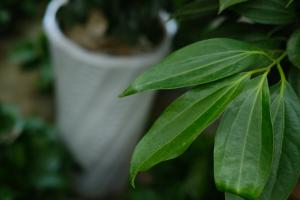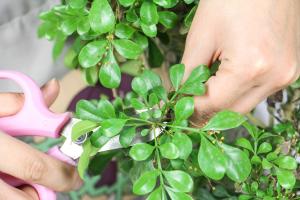How to Care for Bonsai Plants
Bonsai plants are not just miniature trees, but an art form that requires care and attention to maintain their size and structure. Proper care of a bonsai plant ensures its longevity and beauty. In this article, we will discuss some tips on how to care for your bonsai plant.
Step 1: Watering
One of the most crucial aspects of bonsai care is watering. Bonsai plants require watering on a regular basis, but overwatering can be harmful. To prevent overwatering, check the soil regularly by poking a finger into the soil. If the soil is still moist, do not water the plant. If the soil is dry, water the plant slowly and thoroughly. It is recommended that you use a watering can with a fine pour to avoid disturbing the soil.
Step 2: Fertilizing
Fertilizers are essential for the optimal growth of bonsai plants. Fertilizers provide essential nutrients to the plant and help to keep it healthy. However, you need to be careful with the dosage of fertilizer. Using too much fertilizer can cause the plant to grow too quickly, which can be harmful to the overall health of the plant. It is recommended that you fertilize your bonsai plant every two weeks during its growing season.
Step 3: Pruning
Pruning is an essential part of bonsai care. It helps to maintain the shape and structure of the plant. Regular pruning also promotes the growth of new branches and foliage. To prune a bonsai plant, use sharp scissors to snip off any branches or leaves that are overgrown or unsightly. Be careful not to remove too much foliage, as this can lead to an unhealthy plant.
Step 4: Repotting
Bonsai plants need to be repotted every two to five years. When repotting, it is essential to choose the right soil mix for your bonsai plant. Bonsai soil should be well-draining, as waterlogged soil can be harmful to the plant. When repotting, be sure to prune the roots to keep the plant's size and structure in check.
Step 5: Environmental Control
Bonsai plants require a specific environment to grow and thrive. They need to be placed in an area with adequate sunlight and humidity. Bonsai plants also need to be protected from extreme temperatures and fluctuations in temperature. It is essential to monitor the temperature and humidity levels in the area and adjust accordingly.
In conclusion, taking care of a bonsai plant requires patience, attention, and knowledge. With proper care, your bonsai plant can live for many years and bring joy and beauty to your home. Remember to water, fertilize, prune, repot, and control the environment to keep your bonsai plant healthy and beautiful.

 how many times do yo...
how many times do yo... how many planted tre...
how many planted tre... how many pine trees ...
how many pine trees ... how many pecan trees...
how many pecan trees... how many plants comp...
how many plants comp... how many plants can ...
how many plants can ... how many plants and ...
how many plants and ... how many pepper plan...
how many pepper plan...





























